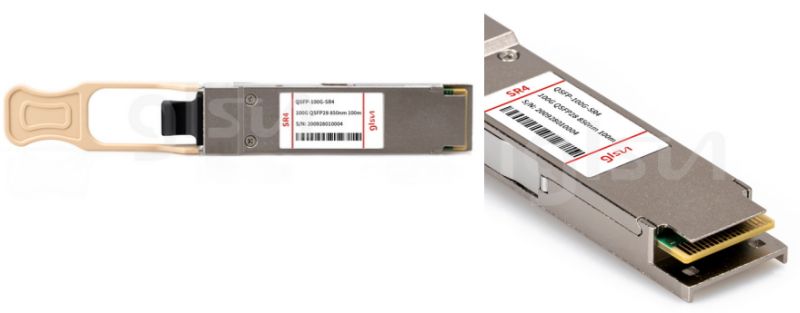Fiber Optic Tech
Application Scenarios of Optical Transceiver Modules
Optical transceiver module is a photoelectronic device for optoical-electric and electro-optical conversion. Optical modules are mainly used in the following fields including data center, mobile communication base station, passive wave division system, SAN/NAS storage network, and 5G bearer network.
1. Data Center
The current data center is no longer just one or several computer rooms, but a group of data center cluster. In order to realize the normal operation of various internet services and application markets, the coordinated operation of data centers is required. The massive real-time interaction of data centers leads to the demand for collaborative work between data centers. Optical fiber communication becomes the necessary means to realize interconnection.
Different from traditional telecommunication access network transmission equipment, data center interconnection requires switching equipment to have higher speed, lower power consumption and more miniaturization in order to achieve more information and more intensive transmission. The optical transceiver module is a key factor that determines whether these performance can be achieved.
Data Center Optical modules for data center communication can be classified into three types according to connection types:
1) From the data center to the user, the user visits the cloud to browse web pages, send and receive emails, and stream video.
2) Data center interconnection, mainly used for data replication and software and system upgrade.
3) Inside data center networks, mainly used for information storage, generation and mining. According to Cisco's prediction, the internal communication of data center accounts for more than 70% of the data center communication. The great development of data center construction also gives birth to the development of high-speed optical module.

2. Mobile Communication Base Station
Mobile communication base station refers to a radio transceiver station that transmits information between mobile communication exchange center and mobile phone terminal in a certain radio coverage area. Operators' mobile communication base stations also need optical modules to connect equipment.
Base station has RRU and BBU equipment. In actual application, we need to connect the link of these two equipment, which requires optical transceiver module and fiber jumper. On a 4G network, the BBU and RRU are connected by 1.25G, 2.5G, 6G, 10G optical transceiver modules.
3. Passive WDM System
In the technical schemes adopted in 5G fonthaul, passive WDM is undoubtedly the highest proportion. Passive WDM system consists of color optical module, multiplexer and optical fiber.
The core principle of passive wave division technology is to use WDM technology to coupling optical signals with different wavelengths and carrying a series of information into a bundle and transmit them in an optical fiber so as to realize the transmission between services. WDM can simultaneously transmit multiple signals along a single optical fiber. It can transmit each signal with a specific wavelength of light matching the signal, and then separate the optical signals of different wavelengths at the receiving end.
4. SAN/NAS Storage Network
With the rapid development of the Internet and network applications, the data types that data storage systems need to deal with are also experiencing explosive growth, which presents unprecedented challenges to data storage systems. Network Attached Storage (NAS) and Storage Area Network (SAN) can separate data storage devices from the network and host system. It also has good expansibility and provides currently the most effective solution for centralized data management.
The main function of SAN/NAS storage network is to store data. SAN network consists of servers, fibre channel switches, storage equipment, and transmission carriers (optical transceiver modules and fiber patch cables). NAS storage network consists of NAS storage equipment, network switches, terminal equipment (computers), and transmission carriers (optical transceiver modules and fiber patch cables).
Note that the SAN network uses fiber channel optical modules that support the FC Fiber Channel protocol, whereas the NAS network uses optical modules that comply with the Ethernet protocol.
5. 5G Bearer Network
5G network is divided into three parts, namely access network, bearer network and core network.
The 5G bearer network is generally divided into metropolitan access layer, metropolitan convergence layer, metropolitan core layer/provincial trunk, realizing the fronthaul, midhaul and backhaul transmission functions of 5G services. Typical application scenarios of 5G fronthaul include fiber direct connection, passive WDM and active WDM, etc.
The typical requirements for optical modules in 5G fronthaul transmission scenarios are as follows:
1) t meets the requirement for industrial grade temperature and high reliability. Considering the outdoor working environment, the fronthaul optical transceiver must meet the industrial-grade temperature range of -40°C to +85°C and should be dust-proof.
2) Low cost. The demand for 5G optical modules greatly exceeds that for 4G, especially the fronthaul optical modules, which may have a particularly high demand. Low cost is one of the main requirements of the 5G industry for optical modules.



















